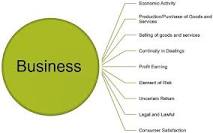ntroduction to Business Architecture
At its core, business architecture is the blueprint that outlines how an organization’s business strategy, processes, information, and technology are aligned to achieve its goals. This multidimensional framework provides a visual representation of the entire business landscape, enabling organizations to streamline operations, reduce inefficiencies, and make informed decisions.
The Components of Business Architecture
Strategy Mapping
Central to business architecture is the alignment of business strategy with operational activities. Through strategic mapping, organizations define their goals, objectives, and action plans, creating a roadmap that guides every aspect of their operations.
Process Design and Optimization
Efficient processes are the backbone of a successful business. Business architecture focuses on designing and optimizing processes to ensure they are streamlined, effective, and adaptable to changing market conditions.
Information Architecture
Information is a valuable asset in the digital age. Business architecture defines how information flows within an organization, ensuring that data is captured, stored, and utilized efficiently to support decision-making and innovation.
Organizational Structure
A well-defined organizational structure is essential for effective collaboration and communication. Business architecture provides insights into the roles, responsibilities, and relationships within an organization, fostering a cohesive and productive environment.
Benefits of Implementing Business Architecture
Enhanced Decision-Making
Informed decisions are key to success. Business architecture equips decision-makers with a clear overview of the entire organization, enabling them to make strategic choices backed by data-driven insights.
Improved Agility and Adaptability
In a rapidly changing business landscape, adaptability is vital. Business architecture enables organizations to identify potential disruptions and adapt their strategies and processes proactively.
Efficient Resource Allocation
Resource allocation can make or break a business. Business architecture ensures that resources are allocated optimally, minimizing wastage and maximizing efficiency.
Clear Communication and Collaboration
Smooth communication and collaboration are essential for achieving organizational goals. Business architecture enhances communication by providing a shared understanding of objectives and processes.
Stay tuned for the second part of this article, where we will delve further into the steps to develop an effective business architecture, the key roles involved, and some real-world examples of successful implementations.


